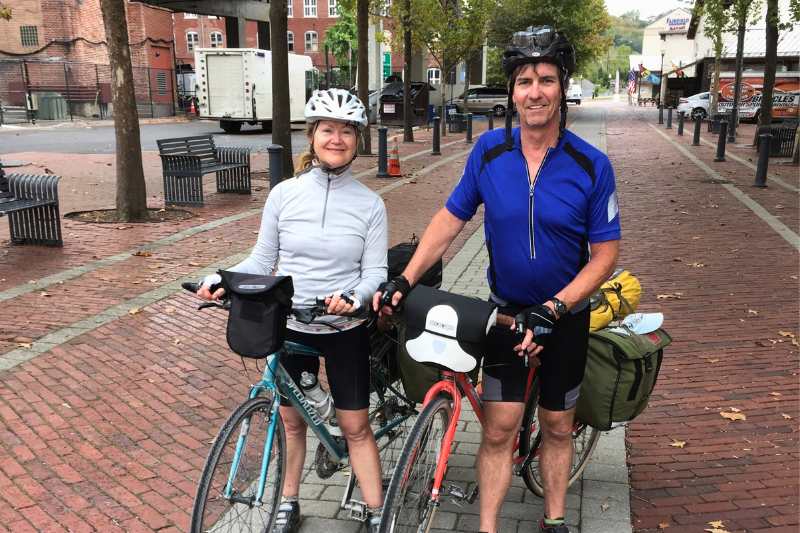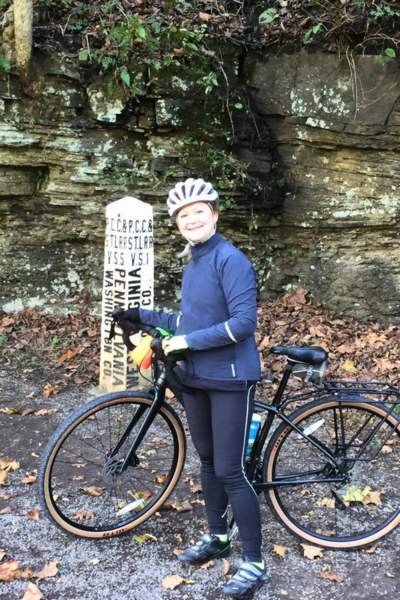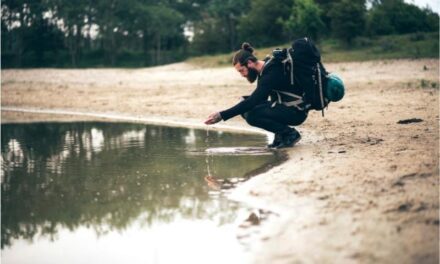Riding a bicycle is a beautiful way to reduce carbon emissions and have rewarding adventures while exploring the world.
My passion for bicycling began years ago when I purchased a Miyata Trail Runner Mountain bicycle. My bike partner joined me riding in the woodlands in the Adirondacks on free weekends. We bike-packed our tent, sleeping bags, food, and fishing poles. It was great fun!
My bike riding slowed down as I became busy raising my children, but about twelve years ago, I jumped back on the saddle. Since then, I have spent countless miles riding the rails to trails – an adventure that has rejuvenated my mind, health, and spirit.
I have seen incredible sights that I would have missed by traveling in a vehicle.
Pedaling through the tranquil scenery of the forest, along the banks of rivers, streams, and fields of wild plants, I ponder many questions, like how old are the deciduous and pine trees along the trail? The circumference of these secondary-growth forests is enormous. If trees could speak, what would they tell us about history, romance, and changing times in all cycles and genres of life? What kinds of birds and butterflies migrate, and what is happening in the process and diversity of wildlife concerning our changing climate? I think of people in years past riding on the train and viewing the countryside as we do only from a bicycle seat. Where were they heading? What were they taking in from their views of the countryside?
Once abandoned, rail tracks have become a great trail system and growing in the U.S. to 25,000 miles.
For example, the Great American Rail Trail from Washington State to Washington, D.C., boasts 3,700 miles, not including 145 existing rail trails, greenways, and other multi-use trails. In the southwestern corridor of Pennsylvania, a path that has expanded from Pittsburgh to Washington, D.C., known as the Greater Allegheny Passage Trail (GAP), is approximately 150 miles to Cumberland, Maryland. It then connects to the C&O Canal towpath to Washington, D.C., nearly 335 miles.
These rail-to-trail systems are fabulous for people who love the outdoors and explore nature through birding, hiking, running, walking, bicycling, and more. In addition, towns and small cities close to being dormant have revitalized as the need for a place to stay, eat, and rest are becoming more popular.
One such place is the Morguen Toole Company Hotel, located in Meyersdale, PA.
One such place is the Morguen Toole Company Hotel, located in Meyersdale, PA. I recently stopped here on a bike ride and chatted with the owner. He told me that if it were not for the rail-to-trail system, many small towns that were once thriving due to rail service and other industrial jobs would be ghost towns. On the other hand, the local owners of small businesses such as restaurants, hotels, gift shops, and museums are grateful for the trail system and restoration of their local economy.
Riding a bicycle is a beautiful way to enjoy the outdoors, exercise your body and reduce carbon emissions. We appreciate and respect those who work on the recreation trail systems connecting corridors so that everyone enjoys these beautiful all-purpose trails.

Written by Yvonne Dwyer
Master Naturalist and OPL Content Contributor
“It is truly an honor for me to be a contributor to One Planet Life. By sharing my experiences and lifetime of learning, I hope to inspire conservation, sustainability, stewardship, and awareness of enjoying the natural wonders of the world for the wellbeing of people and the planet.”











